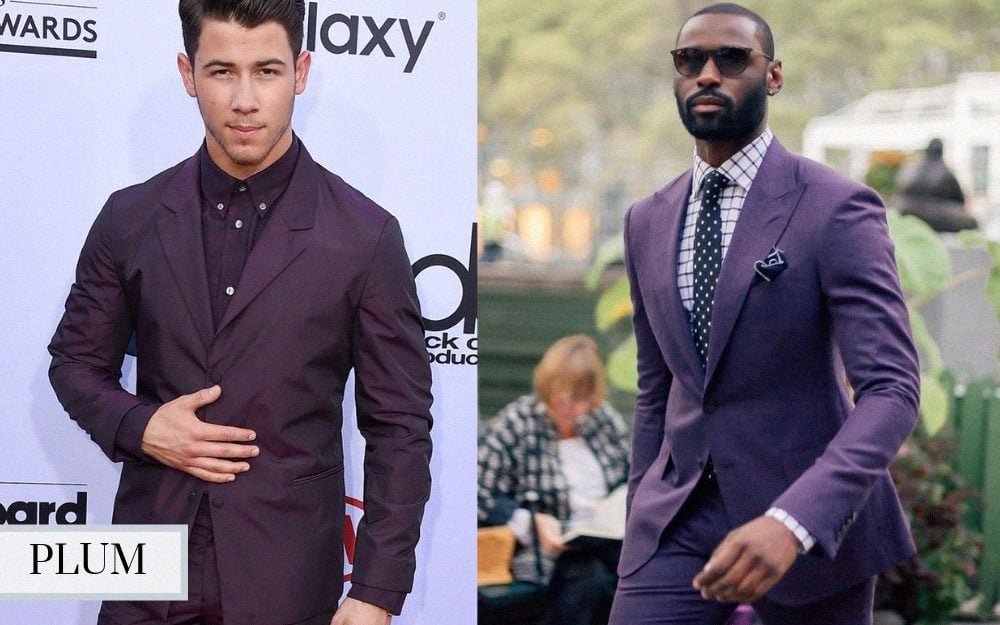A Gentleman’s Guide to Winter Suits
Everything you need to know
when shopping for winter suiting

Written by RJ Firchau
When the icy chill of winter
rears its frosty head, it’s time to push your linen and seersucker suits to the
back of the closet and opt for something bit warmer. Suit fabrics make all the
difference when you’re forced to bear the cold while managing to look sharp.
However, winter suiting does
not have to be boring. In the same way that the warm summer weather gave you a
surfeit of outfit flexibility in the form of summer suits, you can apply the
same creativity and style to your cold-weather ensembles.
Look cool and stay warm all
winter long. Here is our definitive guide on what to look for in a winter suit.
What to Look for in a Winter
Suit
If anyone tries to sell you a
suit claiming that it’s suitable for year-round wear, grab your money and run.
A fabric that is breathable and lightweight in the summer will make you
miserable in the winter, and vice versa.

TM Lewin
Unless you live in a very
temperate climate, you should have a designated selection of suits for, at the
very least, summer and winter. For the best winter suit, pay attention to the
suit’s construction and fabric. These factors will determine the suit’s ability
to keep you warm.
Depending on how cold it gets
where you live, be sure to stick to half- or fully-lined suit jackets. Lined
jackets will resist wrinkles, retain warmth, and hold up better during travel
and everyday wear than unlined suits. Here are some of the best fabrics,
colors, and patterns for winter suiting.
WINTER SUIT FABRICS
The optimal winter suit will
be made of a warmer, thicker fabric that will keep you nice and toasty against
the elements. Stay away from the lighter suit fabrics like cotton, polyester,
linen, seersucker, chambray, and fresco, as these will induce endless
shivering. Unlike summer suits, winter fabric better lends itself to retaining
a suit’s shape and maintain their structure exceptionally well, so you won’t
have to worry as much about wrinkling or wearing of material.
The Wool Suit
To this day, wool remains the
most popular suit fabric. Wool is a fabric renowned for its ability to drape
nicely, maintain its form, and its versatility in being able to be spun as
loose and breathable or tight and warm as necessary. Wool suits have maintained
the position of being the most popular suit on the market for decades, because
of these versatile qualities.

Trashness / GQ
This is a great place to start
acquiring your winter suiting, as a good wool suit is easy to find and comes in
a variety of types. Worsted wool is the most popular wool used for suits, as it
is highly adaptable to temperature change, wears well, and gives off that
slight shine that you find in most suits on the market. Other popular types of
wool are tweed and flannel. Worsted is considered mid-weight wool, tweed is
heavier, and flannel is the heaviest. Flannel and tweed are discussed in
greater detail below.
The Cashmere Suit
Arguably one of the most
coveted and luxurious suit fabrics on the market, cashmere is known for its
unparalleled soft texture, comfort, and most importantly warmth. However, some
of the biggest drawbacks for this fabric is its price tag and its lack of
durability.

Rather than shelling out
thousands for a 100% cashmere suit that won’t last you very long, opt for a
wool or polyester blend. Blends keep cashmere prices low while giving you the
advantage of other fabrics’ durability. Along with being soft, cashmere is also
amazing for keeping you consistently warm. The fabric is highly adaptable to
climate change and will be able to insulate you very well.
However, be very particular
about how you store your suit because cashmere attracts moths, who can chew
$1,000 holes into your suits quicker than you will be able to wear them. If you
do decide on a cashmere or cashmere blend suit, protect your purchase with a
cedar closet or mothballs.
The Tweed Suit
Tweed is a great winter suit
fabric that will always give timeless ease to the wearer. The fabric is made
from wool and created by combining three differently colored yarns, which are
then twilled.

To “twill” is to weave yarn in
such a way that it produces a distinctive pattern unique only to this variety
of fabric. Tweed makes a fine winter suit choice because it is thick, warm,
water resistant, and durable. However, tweed suits are a little heavier
compared with most suits, and the fabric is coarse to the touch. If you live in
a very cold winter climate and you don’t mind the feel of the fabric, a tweed
suit is definitely the way to go to make a classic statement.
The Flannel Suit
Another winter suit fabric is
flannel, which was made for protecting against cold climates. Traditionally
speaking, flannel suits are for more mature gentlemen. But flannel is
increasingly reinventing itself as a suit fabric for the bold and stylish
modern man.

Though these suits are weather
appropriate, they aren’t always comfortable in an office environment because of
their weight. Flannel is typically made of worsted wool. It is similar to tweed
and herringbone in terms of look, but it’s softer to the touch. These suits
have the advantage of being hip and stylish, giving wearers a polished and
slightly felted appearance. Flannel also appears the most luxurious of the
heavier fabrics because it is extremely soft. However, flannel suits are a bit
tougher to find, and you can expect to pay a pretty penny ($800-$2000) to get
your hands on one.
If you can afford a flannel
suit, having one in your winter arsenal will show the world that you are able
to curate your look appropriately with the changing seasons and that you are a
style trendsetter. Flannel is acceptable for day-to-day use, but may not be
formal enough for special occasions or strict dress codes.
The Herringbone Suit
Much like tweed, the
herringbone is heavy, warm, and durable. What distinguishes herringbone from
tweed is a distinctive thin zig-zag pattern.

Like tweed, herringbone suits
are made from twilled yarn, typically from materials like wool or flannel. Both
tweed and herringbone fabrics consist of a tighter weave than most suits,
making for a more structured and durable garment. The thickness of the fabric
paired with the subtle zig-zag design cause this suit to give off an illusion
of depth, making this suit ideal for gentlemen on the slimmer side.
WINTER SUIT COLORS
It’s great to have some
all-season suit staples in black, navy, or charcoal. However, just because the
winter is prime time for darker hues, this does not mean you can’t also have a
little fun with color. If you already have your suit staples in check, try
implementing some of these daring options into your winter wardrobe. Feel free
to go bold with a full suit in one of these colors, or break it up with a
colored jacket, pants, or accessories.
Oxblood

Definitely not your average
black, gray, or navy suit, oxblood suits are popping up everywhere these days.
What exactly is oxblood? Oxblood is a deep shade of burgundy, a shade that
commands presence and attention when you walk into a room while maintaining a
suit’s formal essence. It is bold enough to make a statement but not so loud
that it isn’t office appropriate.
Hunter Green

Another great color that makes
a statement without coming off forced is hunter green. This particular shade of
dark green looks great and is a classy alternative to the traditional neutral
tones. Slightly jewel-toned in hue, but still deep and reserved, you’d be
hard-pressed NOT to include this color in your arsenal this winter.
Cognac

Though brown is also on trend
for the fall and winter months, how about trying its caramel-y, amber cousin
instead? A neutral color that is more modern than the traditional brown and
more stylish than, let’s say, khaki, a cognac suit will impress your coworkers
without attracting any wayward looks from the boss. Cognac is a perfect suit
color for those looking to add a unique element to their ensemble without being
overstated.
Plum

Deep, deep purple on a suit
will be sure to give you an edge to stand out. Like oxblood, plum is a bold
color choice, so wear it with pride, and you’ll be sure to look like a true
connoisseur of style.
ACCESSORIZING YOUR WINTER SUIT

Just because it’s winter does
not mean you can’t have fun with your style. Your winter suit colors tend to be
darker. Choose accessories that either complement (dark hues) or contrast
(bright, patterned) your suit for a big impact. Feel free to play up textures
and patterns to add dimension to your look.
Knit ties are a great seasonal
accessory for winter and generally look great with everything. Scarves are a
winter essential that also adds style and will keep you warm on your way to and
from the office. Finally, try adding some floral to your ensemble. Dark florals
are definitely happening for winter. Achieve this trend with a floral tie,
simple dark floral button up, or even a floral pocket square. Remember, you
don’t have to stick to dark, subdued hues just because it’s winter. Add style
and dimension to your winter look through accessories, and have fun with it.
RJ Firchau
SOURCE: THE GENTLEMANUAL
SOURCE: THE GENTLEMANUAL
Comments
Post a Comment